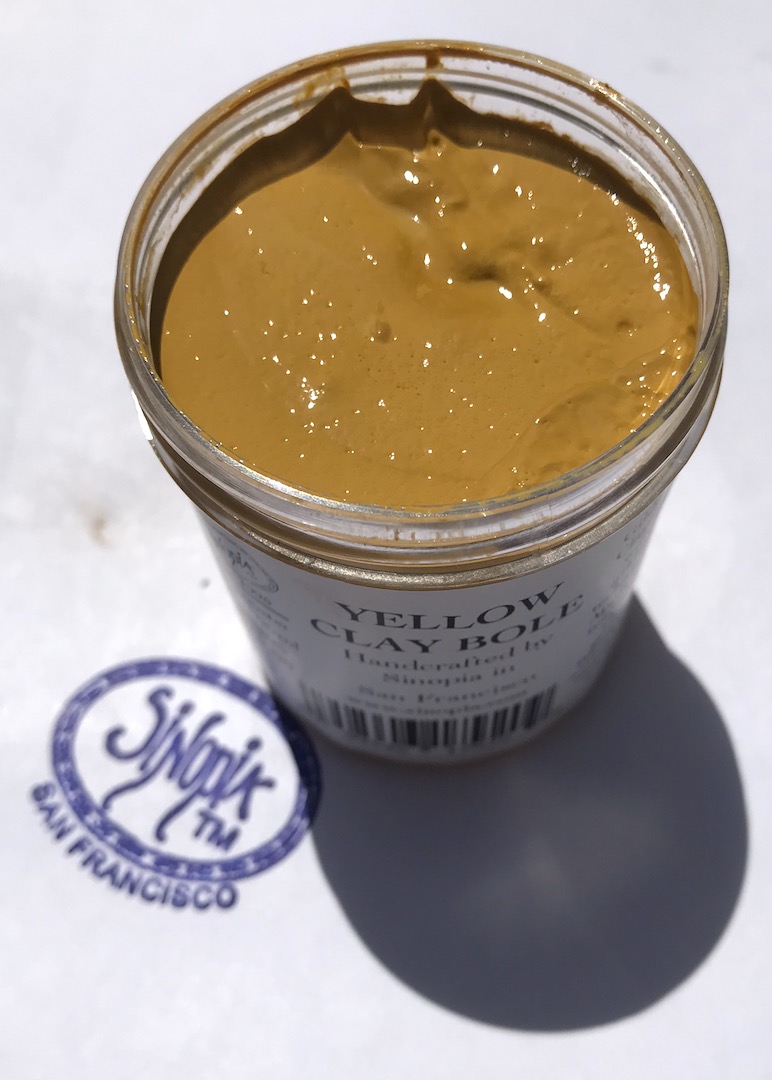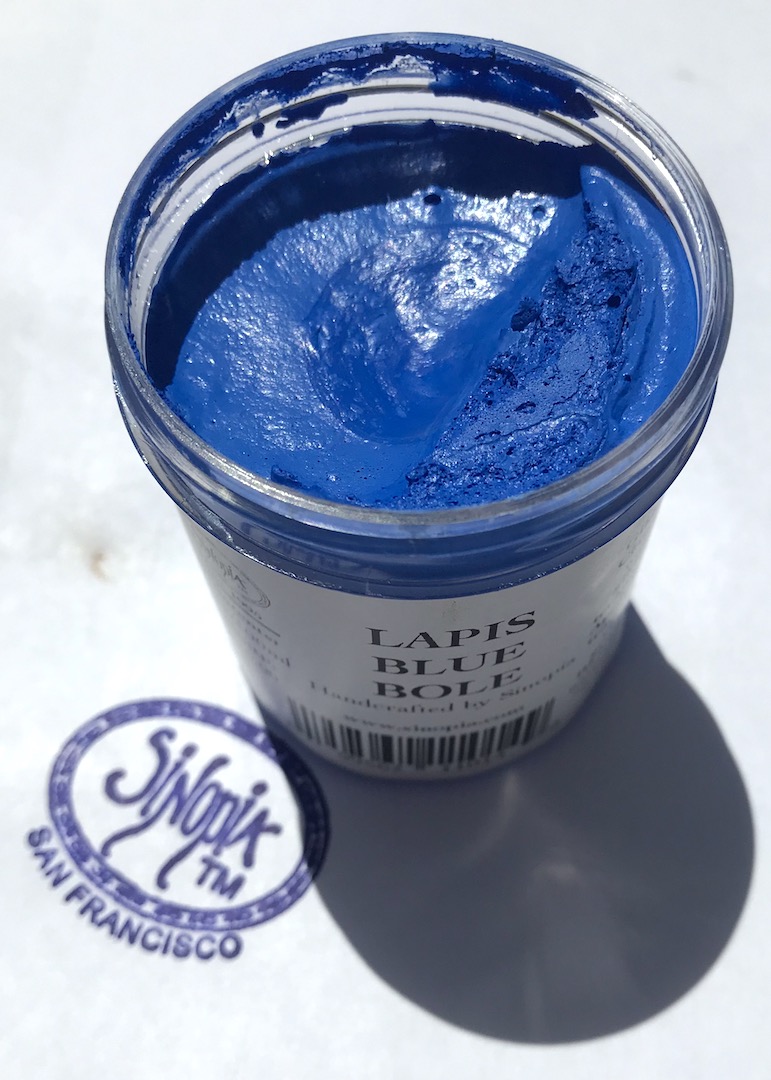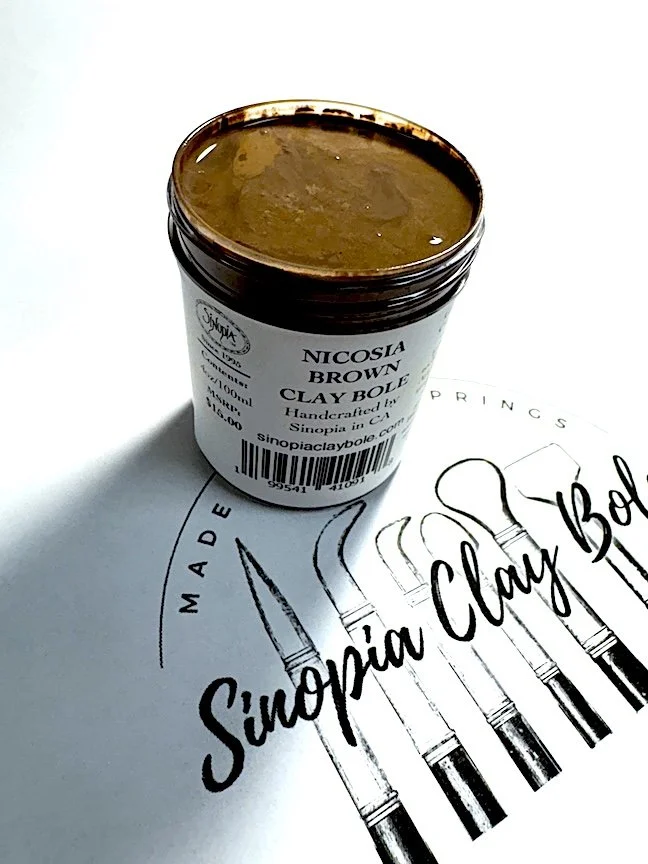The Sinopia Clay Bole Color Palette
We have assembled a palette of colors that include such classics as red, yellow and black. Additionally, we have a number of non-traditional colors that are not normally found in most manufacturers color selection. We have selected these colors, because they can offer a beautiful contrast to such metals as white & moon gold, palladium, platinum and copper leaf. Sinopia has been fortunate to have access to historical colors, which have been out of production for decades. These colors are designated as "classic" shades. We are constantly researching new colors, which we discover during our travels or by researching historical samples. Follow our blog and discover the journey of how our colors evolve into becoming part of the Sinopia Clay Bole Palette.
Standard Red Clay Bole
This is the most commonly used color in watergilding. The bright red warms up all types of yellow gold.
Standard Yellow Clay Bole
Another staple color for any gilder. Traditionally, red bole was underpainted with one or two layers of yellow bole.
Standard Black Clay Bole
This is the third color that is considered part of the standard gilders' palette. Oftentimes, this color of bole is used under such paler metals as silver, palladium, platinum, white gold leafs.
Lapis blue clay bole
This rich deep blue creates a vibrant contrast to such pale metal colors as silver and white gold.
Green clay bole
This rich green is oftentimes used under rose gold and sometimes even copper. The green creates a dramatic contrast to any reddish leaf.
White clay Bole
This bright white is a versatile ground for most watergilding project. Chosen many times as an elegant substrate for gold leaf.
classic french red clay bole
In the late sixties, a prominent French bole manufacturer discontinued a signature red color and replaced the shade with a bright red. We were able to secure a sample of this historical red and we managed to match the earthy orange shade that graces the surface of many vintage frames.
classic french yellow clay bole
As a compliment to the above Classic French Red, we were able to secure a sample of the historical yellow, as it was produced up until the 1960's in France. Again, this clay has a pronounced orange shade, which lends warmth to this yellow clay.
classic italian Grey clay bole
In our travels through museums, we noticed that many of the Italian frames from the Quattrocento period were adorned by a deep grey bole underneath their gilded surfaces. We managed to match the shade and add this color to our historical bole collection.
classic spanish red clay bole
This fiery bright orange red is emblematic of the colors used on Spanish frames. In contrast to our other subdued historical colors, this shade offers a bright counterpart for dramatic gilding effects.
bardini blue clay bole
The genesis of this color initially arose from observing a deep rich blue bole on Italian Quattrocento icon frames, but was never fully developed. The missing piece was the inspiration that was sparked by the walls at the Bardini Museum in Florence, Italy. The blue walls create a stunning contrast to the pieces in the collection, many of which are gilded.
equestrian leather clay bole
The shade of this bole was inspired by the leather color, as found on equestrian tack. Once the bole is applied, it has the appearance of new beige leather. As the leather ages, it is burnished into rich deep brown color by wear, just like the bole, when it burnished after application.
Nicosia Brown Clay bole
Rich dark chocolate brown.clay made with a genuine Burnt Umber Natural Earth Pigment.













